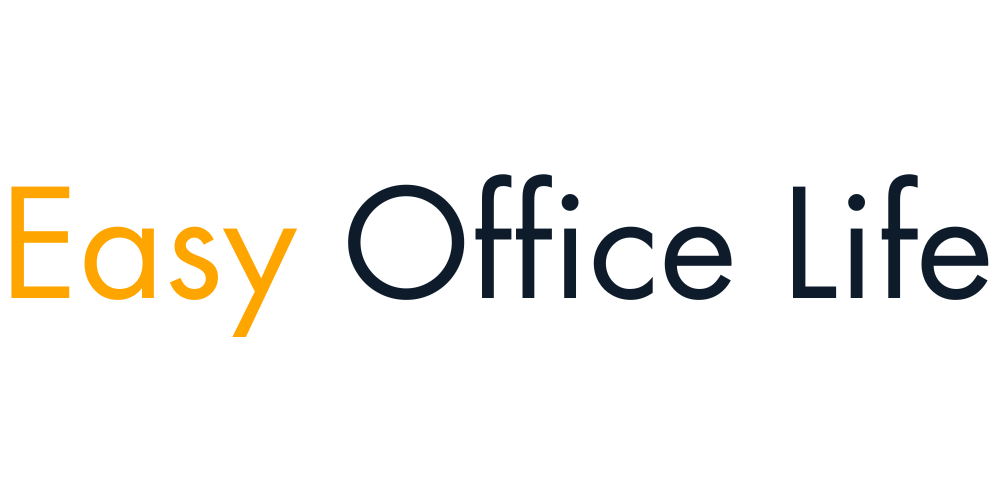
Introduction to Remote Work
Remote work, often referred to as telecommuting, is a work arrangement where employees perform their job responsibilities outside of a traditional office environment. This model has its roots in the latter half of the 20th century but has significantly evolved over the years, particularly with advancements in technology and changing workforce dynamics. In the past, remote work was primarily associated with specific professions, such as sales and consulting, where travel was a requirement. However, with the advent of the internet and digital communication tools, it has expanded to encompass a wide range of industries and job roles.
Technological advancements have undeniably played a crucial role in facilitating why remote work is so viable today. The introduction of high-speed internet, cloud computing, and collaboration platforms has enabled seamless communication and workflow management regardless of physical location. These tools allow teams to collaborate in real-time, share files efficiently, and maintain productivity without being tethered to a desk. This evolution in technology has led to a cultural shift in how organizations perceive work, resulting in a growing trend of companies adopting flexible work policies that empower employees to choose where they work best.
While the benefits of remote work are substantial—ranging from reduced commuting time and increased flexibility to enhanced work-life balance—it is essential to recognize the challenges it poses as well. Employees may face potential feelings of isolation, difficulty in separating work from personal life, and the challenge of maintaining communication with colleagues. Organizations and individuals must navigate these obstacles to fully realize the advantages that remote work can offer. Overall, understanding the dynamics of remote work is critical for both employers and employees as they explore this increasingly popular professional landscape.
Flexibility and Work-Life Balance
One of the most notable advantages of remote work is the flexibility it offers regarding both work hours and location. Unlike traditional office settings where rigid schedules prevail, remote work environments allow individuals to tailor their work routines to better fit their personal lives. This flexibility can significantly enhance one’s work-life balance, leading to healthier, more productive lifestyles.
By eliminating the daily commute, which can often be lengthy and stressful, remote workers can reclaim valuable time that can be redirected toward personal interests, family commitments, or simply relaxing. In many cases, this leads to a more harmonious integration of work and personal life. Additionally, remote work offers the opportunity to choose an optimal work environment—be it a quiet home office, a bustling café, or even a serene location in nature—allowing individuals to create spaces that foster productivity and creativity.
The flexibility to adjust work hours also plays a crucial role. For many, the standard nine-to-five schedule does not align with their most productive hours. Remote work enables individuals to structure their days according to their peak performance times, which can lead to improved output and job satisfaction. Furthermore, the ability to handle personal responsibilities during traditional work hours can alleviate stress and contribute to an overall sense of balance.
In essence, the advantages of remote work are vast and multilayered. By embracing its inherent flexibility, individuals can enjoy a better work-life balance, reduce stress, and enhance their overall productivity. As the trend of remote work continues to rise, it becomes increasingly evident that the ability to adapt work to life, rather than vice versa, is a compelling reason for the shift towards this modern employment model.
Cost Savings for Employees
The financial implications of remote work present an appealing prospect for many employees. One of the most immediate benefits is the significant reduction in commuting costs. By eliminating daily travel, individuals can save on gas, public transport fares, and car maintenance expenses. This not only decreases overall expenditure but also contributes to a more sustainable lifestyle by reducing carbon footprints.
Moreover, the transition to a remote work model often leads to savings in wardrobe costs. Traditional work environments necessitate an investment in professional attire, which can be costly. Remote employees typically enjoy the flexibility to dress casually and comfortably, potentially leading to savings on clothing purchases. This shift toward more relaxed dress codes allows employees to prioritize personal comfort while working, further enhancing their job satisfaction.
In addition to commuting and clothing expenses, meal costs can also see significant reductions in a remote work setting. Individuals working from home may choose to prepare their meals rather than purchasing lunch or snacks from cafés and restaurants. This practice not only fosters healthier eating habits but also reduces daily expenditures on dining out. For remote employees, home-cooked meals become both a financial and health-conscious choice.
Furthermore, remote work provides the potential for reduced living expenses. Many professionals consider relocating to more affordable areas when given the flexibility to work from anywhere. By moving to less expensive regions, employees can significantly lower their rent or mortgage payments and overall cost of living, allowing for better financial stability. The opportunity to live in a lower-cost environment while maintaining their income can enhance quality of life. Therefore, the financial advantages associated with the rise of remote work are substantial and worthy of consideration.
Increased Job Opportunities
The evolution of the modern workplace has significantly transformed the job market, particularly with the rise of remote work. One of the most compelling reasons to consider remote positions is the unprecedented access to job opportunities that transcend geographic boundaries. Traditionally, job seekers were confined to local markets, often limiting their options to roles that are physically accessible. However, with the increasing acceptance of remote work, individuals can apply for positions thousands of miles away, effectively broadening their horizons.
This shift benefits both job seekers and employers alike. For candidates, it provides the opportunity to explore roles that align more closely with their skills and career aspirations, regardless of location. For example, a talented software developer in a small town can now compete for positions with top tech companies located in major urban centers. Moreover, this expanded reach often leads to the discovery of specialized roles that may not be available locally, allowing professionals to find niche opportunities in their fields.
For employers, the ability to tap into a global talent pool means they are not limited to local candidates, significantly enhancing the chances of finding the right fit for their organizations. This is especially advantageous in industries where specific skills are in high demand yet difficult to source locally. By embracing remote work, companies can access a wider diversity of candidates, bringing varied perspectives and expertise into their teams.
In conclusion, the advent of remote work has revolutionized the job market, creating a wealth of opportunities for both individuals and businesses. With no geographic restrictions, job seekers are empowered to pursue positions that best reflect their qualifications and interests, while employers can secure top talent from a global landscape, making remote work an increasingly attractive option in today’s workforce.
Enhanced Productivity
The evolution of work culture has seen a notable shift towards remote employment, prompting an exploration of why remote work can enhance productivity. Various studies and anecdotal evidence suggest that many individuals experience heightened productivity when operating from home or other preferred locations. One major factor contributing to this increase is the reduction of workplace distractions. In traditional office environments, interruptions from colleagues, unplanned meetings, and ambient noise can derail focus and diminish efficiency. Conversely, remote workers have the flexibility to create environments conducive to their specific needs, thereby fostering a more concentrated work atmosphere.
Moreover, the ability to personalize workspaces is a significant element that boosts productivity in remote work settings. Workers can curate their environments to include elements that inspire creativity and comfort, such as preferred lighting, ergonomic furniture, and personalized decor. This control over their surroundings enables individuals to feel more motivated and engaged, enhancing their overall output. Research also indicates that when employees are in environments where they feel comfortable and in control, their work quality and efficiency significantly improve.
Additionally, remote work arrangements offer individuals the autonomy to manage their schedules effectively. By allowing employees to tailor their work hours around their personal peak productivity times, companies often see an uptick in project completion rates and overall work satisfaction. This flexibility empowers workers to balance personal obligations and work responsibilities more effectively, which can further elevate performance levels. As more people seek options that promote a better work-life balance, the trend towards remote work continues to grow. Consequently, it becomes increasingly evident why remote work is a viable option for enhancing productivity in the contemporary labor market.
Challenges of Remote Work
As the trend of working remotely gains momentum, it is imperative to address the associated challenges that may arise. A significant concern for many individuals who embrace this mode of employment is the feeling of isolation. Unlike the traditional office environment, remote work often limits face-to-face interactions, which can lead to a sense of disconnection from colleagues and peers. This isolation can impact one’s mental well-being, making it essential for remote workers to actively seek social connections, whether through virtual meetups or by participating in community events.
Another challenge linked to remote work is the difficulty in separating professional responsibilities from personal life. When the workplace is situated within the home, it can become increasingly hard to establish boundaries. This blurring of lines may lead to longer working hours and a reduced ability to unwind, which could contribute to burnout over time. To combat this challenge, remote workers should create a dedicated workspace, establish a consistent schedule, and communicate openly with household members about work hours to foster an environment conducive to productivity.
Furthermore, remote work necessitates a high degree of self-motivation. Without the physical presence of supervisors or colleagues, it can become challenging to stay focused and productive. The absence of immediate supervision may result in distractions that hinder performance. To enhance self-discipline, setting clear goals and utilizing productivity tools can prove beneficial. Regularly reviewing progress and maintaining check-in meetings with team members can also help ensure that motivation remains high.
In conclusion, while remote work presents numerous advantages, it is crucial to consider the challenges it poses. By acknowledging feelings of isolation, maintaining a clear work-life balance, and promoting self-motivation, individuals can enjoy the benefits of remote work while effectively navigating its potential hurdles.
Building a Home Office
Establishing an effective home office is pivotal for individuals embracing remote work. The first step in this process is selecting the appropriate space within your residence. Ideally, this area should be quiet, free from distractions, and separate from your personal living space. Whether it’s a designated room or a nook in your living area, having a defined workspace contributes significantly to mental clarity and productivity.
In terms of ergonomics, it is essential to invest in quality furniture that supports healthy posture while working. A comfortable chair that provides lumbar support, combined with a desk at the right height, helps minimize physical strain. Equipping your workspace with adequate lighting, preferably natural light, can also enhance your mood and efficiency. For individuals delving into remote work, maintaining comfort should figure high on their priority list.
Necessary tools and equipment for remote work vary based on individual needs, but certain essentials are universally beneficial. A reliable computer, high-speed internet connection, and ergonomic accessories such as keyboard and mouse options are fundamental. Additionally, a dedicated phone line or headset can enhance communication, ensuring you remain connected with colleagues and clients alike.
Creating a motivating atmosphere is another key component to fostering productivity in a home office. Personalizing your workspace with items that inspire you – such as artwork or motivational quotes – can encourage a positive mindset. Furthermore, establishing a regular routine that includes scheduled breaks prevents burnout and keeps you engaged with your tasks. By thoughtfully constructing your home office, you can effectively transition into the world of remote work with a conducive environment that enhances both focus and creativity.
Communication and Collaboration Tools
As remote work becomes increasingly prevalent, the necessity for effective communication and collaboration tools cannot be overstated. These tools are essential for maintaining team cohesion and fostering engagement within virtual environments, ensuring that the transition to remote work does not hinder productivity or collaboration. A plethora of platforms have emerged, each designed to facilitate various aspects of communication among distributed teams.
One of the most popular tools is Slack, which offers real-time messaging, file sharing, and integration with other applications. Its channel-based structure allows teams to segment conversations by projects or topics, thereby enhancing organization and focus. Another prominent platform is Microsoft Teams, which provides chat functionality, video conferencing, and collaborative document editing, making it a robust solution for businesses already using the Microsoft 365 ecosystem. Zoom has also risen to fame, renowned for its high-quality video conferencing capabilities, which can accommodate large groups – a critical feature for remote meetings.
In addition to these tools, project management applications such as Trello and Asana are invaluable in keeping remote teams aligned and accountable. These platforms offer visual organization through boards, lists, and timelines, allowing team members to track progress and collaborate efficiently, even from different locations. Furthermore, tools like Google Workspace enable real-time collaboration on documents, spreadsheets, and presentations, making it easier for teams to work together seamlessly without being physically present in the same space.
Ultimately, harnessing the right communication and collaboration tools is key to a successful remote work experience. These technologies not only bridge the communication gap that can arise in virtual settings but also help maintain a strong team culture, ensuring that all members feel connected and valued despite geographical distances.
The Future of Remote Work
The landscape of work is undergoing a significant transformation, with remote work emerging as a viable and sustainable option for many organizations. Industry experts agree that the rise of remote work is not merely a temporary trend but a fundamental shift in how businesses function. As companies begin to recognize the benefits of flexible work arrangements, they are increasingly adopting hybrid models that combine in-office and remote work. This approach not only accommodates diverse employee needs but also enhances productivity and job satisfaction.
One of the key indicators of the long-term viability of remote work is the growing emphasis on work-life balance among employees. According to recent surveys, many workers report a desire for more flexibility, which has prompted companies to reconsider traditional office-centric policies. In fact, firms that prioritize remote work options are likely to attract top talent, as this arrangement allows for a more tailored work experience. Moreover, experts predict that as technology continues to evolve, the tools facilitating remote collaboration will become even more sophisticated, further supporting this new paradigm.
As businesses adapt to these changes, they need to develop robust strategies for maintaining workplace culture and fostering collaboration in a hybrid setting. This includes implementing regular virtual check-ins, leveraging project management software, and building inclusive team environments that encourage participation from all members, regardless of their location. Companies must also be proactive in managing employee expectations by providing clear guidelines and support for those engaged in remote work. Such adaptability will ensure that organizations not only survive but thrive in this emerging landscape.
In conclusion, the future of remote work is promising, characterized by better work-life integration, strategic hybrid models, and enhanced employee engagement. As both employers and employees embrace this shift, it is clear that remote work will redefine the traditional workplace for years to come.






